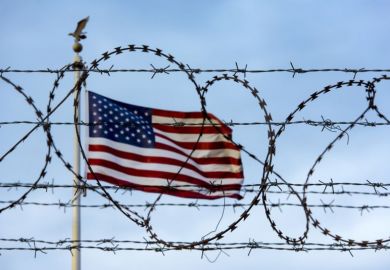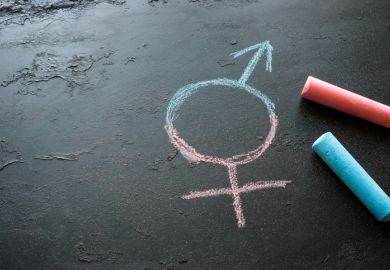Enrolment at US colleges and universities has fallen nearly 2 per cent for the coming year, according to preliminary estimates, with undergraduate losses amid the pandemic offset by gains among graduate students.
Undergraduate enrolment is down 2.5 per cent from last year and graduate enrolment is up 3.9 per cent, making an overall student loss of 1.8 per cent, the National Student Clearinghouse Research Center found.
Such modest declines suggest early fears about the effects of the pandemic on US higher education may have been overblown, said Robert Kelchen, an associate professor of higher education at Seton Hall University.
“This is not surprising,” Professor Kelchen said, “because students have limited alternatives in the labour market right now, so going to college is a solid choice during a recession.”
The data cover 629 institutions – more than a fifth of the US total, according to the Clearinghouse, which plans to issue monthly updates as more campuses provide their numbers.
Beyond the overall level of enrolment decline, the early figures include several other findings that may run contrary to popular expectations, including indications that enrolment losses among black students were no worse than those among whites, with the decline among Hispanic students even lower.
The Clearinghouse data also show urban institutions faring relatively well with autumn enrolment, despite popular concern that coronavirus makes cities riskier, and traditionally online institutions managing to do worse than average at a time of widespread virtual instruction.
The organisation’s first enrolment report for the fall semester also showed an 11 per cent drop in foreign student enrolment that, while large, may be defying the extensive political and health obstacles to students entering the US. Many foreign students avoided that problem by remaining in the US when the pandemic hit.
By sector, the report showed, community colleges fared worst, with an 8 per cent decline in enrolment, despite reports over the summer of students driven by the pandemic and associated recession seeking lower-cost options near their homes. The decline among the two-year institutions was consistent across geographic locations, the Clearinghouse said.
That community college drop-off is the most troubling aspect of the data, as it reflects lower-income students who most need the workplace benefits of college, said Wesley Whistle, a senior adviser on higher education policy at the New America policy thinktank.
The decline is not surprising, said David Baime, senior vice-president for government relations at the American Association of Community Colleges. Some two-year institutions might have been expecting the “want-to-stay-at-home phenomenon” to help them, Mr Baime said, but many others realised they would lose students to expanded openings at their four-year counterparts.
The outsized gain in graduate-school students is also concerning, Mr Whistle said, because of the relatively high debt they tend to incur, especially at online for-profit institutions.
The Clearinghouse is a nonprofit and nongovernmental data-services creation of the US higher education community.
Its director of research publications, Mikyung Ryu, said she expected the trends to grow clearer when the Clearinghouse issues a mid-October update that should cover as many as 60 per cent of all US institutions.
But nothing about the 22 per cent of US institutions that already provided their data suggests they aren’t largely reflective of the rest of higher education, Dr Ryu said.
One possible explanation for the lack of any clear difference to date in the enrolment declines between white and black students this autumn may be seen in the relative eagerness of minority students and their institutions to endure the demands of the pandemic.
Minority students feel tremendous pressure to complete their degrees, to “open doors for them that may otherwise be closed” to them, said Roopika Risam, an associate professor of secondary and higher education and English at Salem State University.
“And they're doing this under significant constraints, like working 40 hours a week – often in front-line jobs at grocery stores, childcare centres and hospitals – on top of being full-time students to support themselves and often their families,” Professor Risam said.
Wealthier students, by comparison, may feel less urgency about completing their studies on time. Harvard University announced that its undergraduate enrolment is down nearly 20 per cent this autumn, with more than 200 incoming freshmen deciding to postpone their acceptance to next year rather than spend this year largely online.
Register to continue
Why register?
- Registration is free and only takes a moment
- Once registered, you can read 3 articles a month
- Sign up for our newsletter
Subscribe
Or subscribe for unlimited access to:
- Unlimited access to news, views, insights & reviews
- Digital editions
- Digital access to THE’s university and college rankings analysis
Already registered or a current subscriber?







